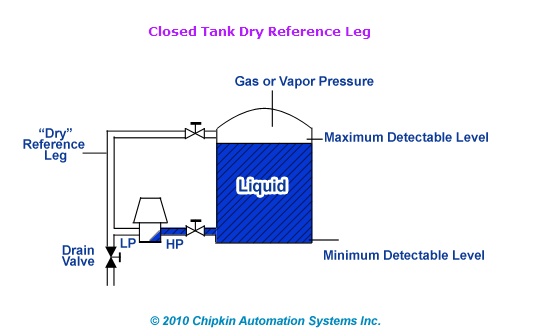The weight of the vapors found above the fluid in the tank is considered to be insignificant whereas, the pressure in the vapor area is quite considerable; hence it can not be disregarded and usually transmitted to the low pressure end of the differential pressure cell. This type of pressure connection is known as a dry leg.
It is primarily used in situations where liquid vapors are non-corrosive, non-plugging, and have low condensation rates at ordinary working temperatures. “A dry leg enables the d/p cell to compensate for the pressure pushing down on the liquid’s surface, in the same way as the effect of barometric pressure is canceled out in open tanks.”
It is recommended to maintain a dry reference leg since buildup of condensate or other fluids have tendency to introduce errors in the level measurement results. A typical closed tank dry reference leg is shown in the figure below.
